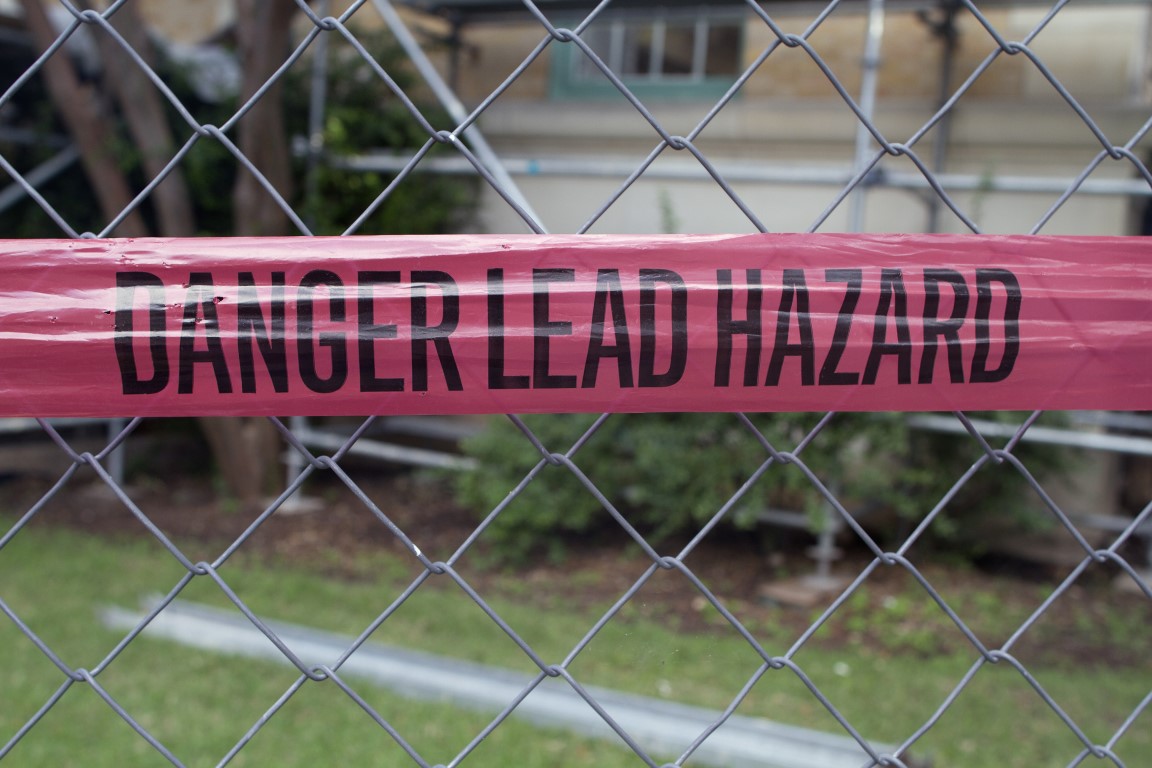While lead contamination extermination is underway, there are still quite a few potential sources of lead exposure which you should know about so that you can avoid harm. In this article, we’ll look at the most common sources of lead exposure and provide you with a resource to consult.
Water
Water is the most common source of lead contamination in municipalities that have recently switched sanitizing chemicals in their water systems. In older water systems, pipes are connected to each other with lead solder, which becomes degraded when in contact with certain sanitizers.
- Orally
- Topically
- Inhalation
Water contaminated with lead will readily utilize all of these routes if possible. Don’t drink or touch water that is contaminated with lead, and avoid breathing in humid areas with groundwater or earthen contamination by lead. Showering with lead contaminated water is particularly dangerous.
Paint
Lead paint and paint dust were formerly used to increase the lifespan of a new paint job. Unfortunately, many houses built before 1978 still contain lead paint, which can easily make its way into the lungs when chipped or into the stomach when eaten by curious children.
Old Toys
Toys made before 1978 likely also use lead as a component in their paint and potentially in their other components as well. The CDC claims that lead is often a component used in malleable plastics, which could easily make its way into children’s toys. Lead in toys causes exposure by the oral route.
Air
Though there are strict limits on the amount of aerial particulate lead, it’s still possible to come into contact with low levels of it via inhalation in contaminated areas. Air contamination of lead is mostly due to industrial pollution, which should be well documented and also well controlled.
Unleaded gasoline is banned in the US, but in areas where it isn’t banned, roadways and especially garages are areas of high aerial lead concentration that should be avoided.
Occupational Exposure
Many factory and industrial workers have to manipulate lead or lead containing products with great frequency. Because of this, they’re at high risk for lead exposure, even with special training.
Construction workers and other contractors like plumbers, electricians, roofers, and excavators are also at high risk, as they’re likely to be working in structures which may have lead paint or lead pipes. These workers must be certified to deal with lead under federal law, but exposure is still likely when working in a lead contaminated area.
There are a couple of other occupational exposure routes which are broadly applicable enough to be worth mentioning.
Ammunition
Bullets and explosives often contain lead despite initiatives reducing their use. Lead is extremely dense, which makes it ideal for ballistics. People who frequently handle munitions are at the highest risk of lead contact through their skin if the munition’s jacketing is imperfect and the lead core is exposed. Gunshot wounds from lead-core bullets are yet another source of lead exposure.
Car Batteries
Cars use lead-acid batteries to provide a charge to the spark plug and start the engine. Though simply handling the battery itself won’t cause any exposure, if the battery’s casing is damaged or leaking, it can cause some serious harm via lead exposure and also via battery acid exposure. Car batteries are also recycled in very large amounts, which means that it’s mostly industrial workers who are at risk for topical exposure.
Ceramics and Art
Historically, pottery was glazed with lead to provide an appealing sheen and reduce the abrasive quality of the clay surface. Most old art is a potential route of topical lead contamination, but modern ceramics should be fine.
Folk Medicine
Certain folk medicines use products that contain lead or are just lead. Burmese folk medicines are particularly potent sources of lead contamination.
Cleaning Up
That concludes our discussion of the most common sources of lead contamination. Use this information to protect yourself and your family.


